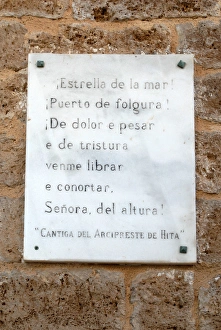Cantiga Collection
"Cantiga: A Glimpse into Medieval Spain's Cultural Tapestry" Step back in time and immerse yourself in the enchanting world of Cantigas de Santa Maria
All Professionally Made to Order for Quick Shipping
"Cantiga: A Glimpse into Medieval Spain's Cultural Tapestry" Step back in time and immerse yourself in the enchanting world of Cantigas de Santa Maria, a collection of songs dedicated to the Virgin Mary. This remarkable manuscript, created under the direction of Alfonso X, also known as The Wise, offers a window into medieval Spanish society. Fol. 61v transports us to an open-air game of pelota, where we witness the excitement and camaraderie that filled the air during leisurely pursuits. As we turn to Fol. 53r, our eyes are captivated by a poignant scene depicting the departure of a boat for the Crusades. Written in Galacian for Alfonso X himself, this illustration speaks volumes about his devotion and commitment to his faith. The manuscript continues its visual journey on Fol. 64r with an exhilarating depiction of falcon hunting—a popular pastime among nobility during those times. The attention to detail is awe-inspiring as we observe every movement captured under Alfonso X's watchful eye. Moving forward to Fol. 16v, we find ourselves amidst an engagement banquet—an occasion brimming with merriment and celebration as two families unite through marriage. It serves as a testament not only to love but also to social customs prevalent at that time. But Cantiga doesn't stop there; it delves deeper into Spanish life with Juan Ruiz's (the Archpriest of Hita) contribution on Men arresting a peasant—highlighting societal dynamics beyond royalty or nobility. Alfonso X's influence resurfaces throughout these pages—his wisdom evident in each stroke of artistry and storytelling within Cantigas' sacred verses honoring Holy Mary herself. As we reach Fol. 200r, our gaze falls upon another facet of Spanish culture—the bullring—a symbol both revered and controversial even then.









